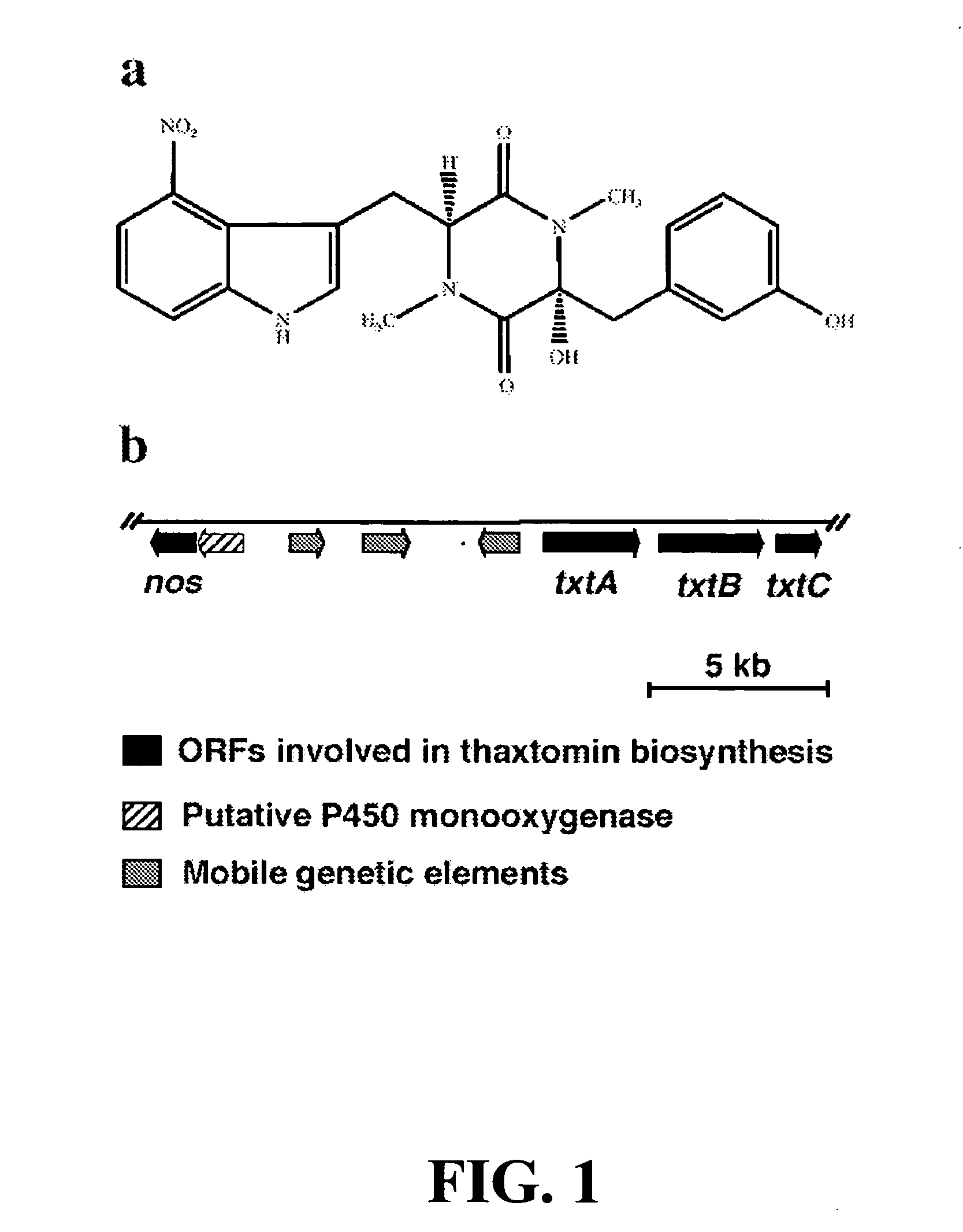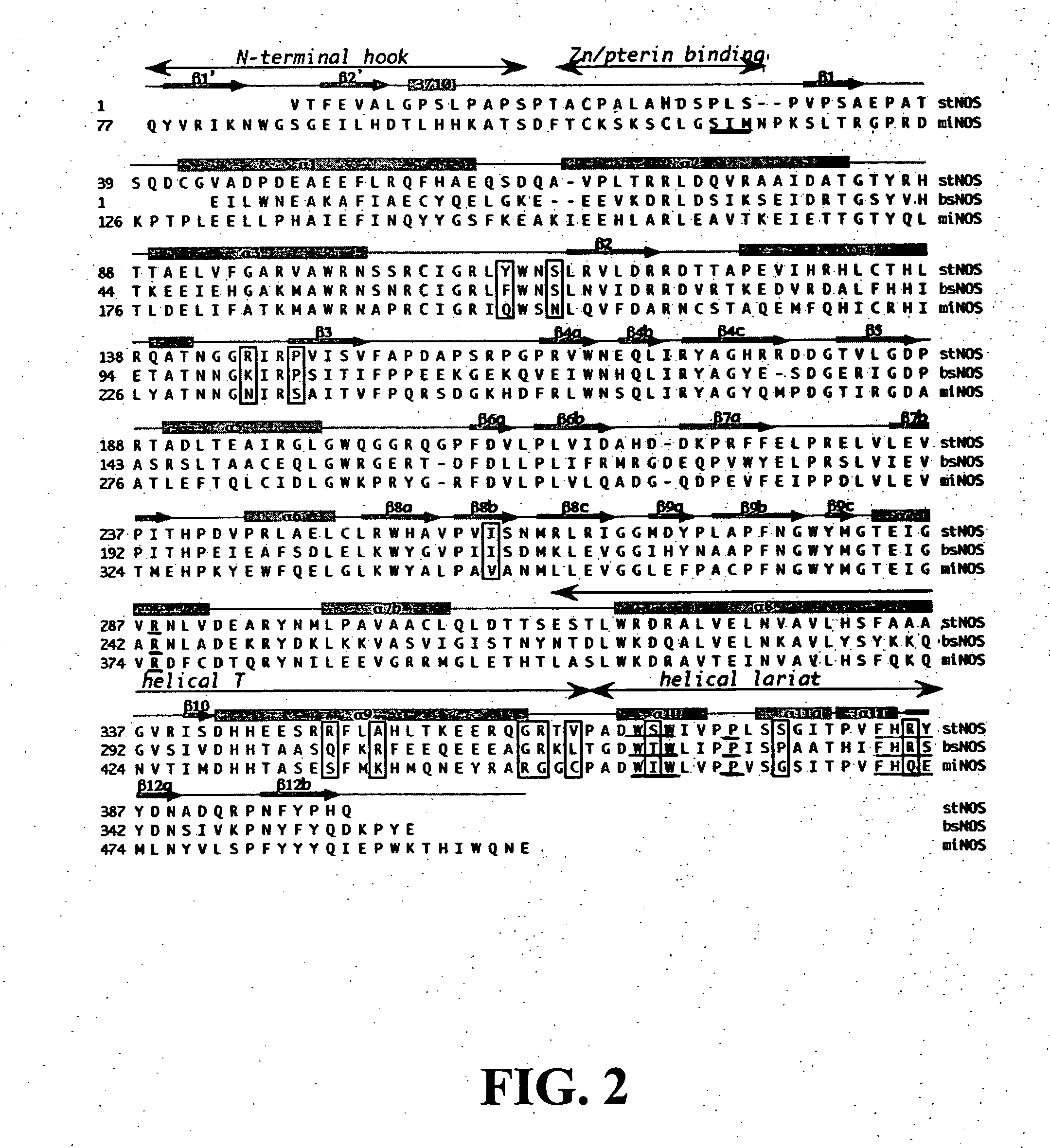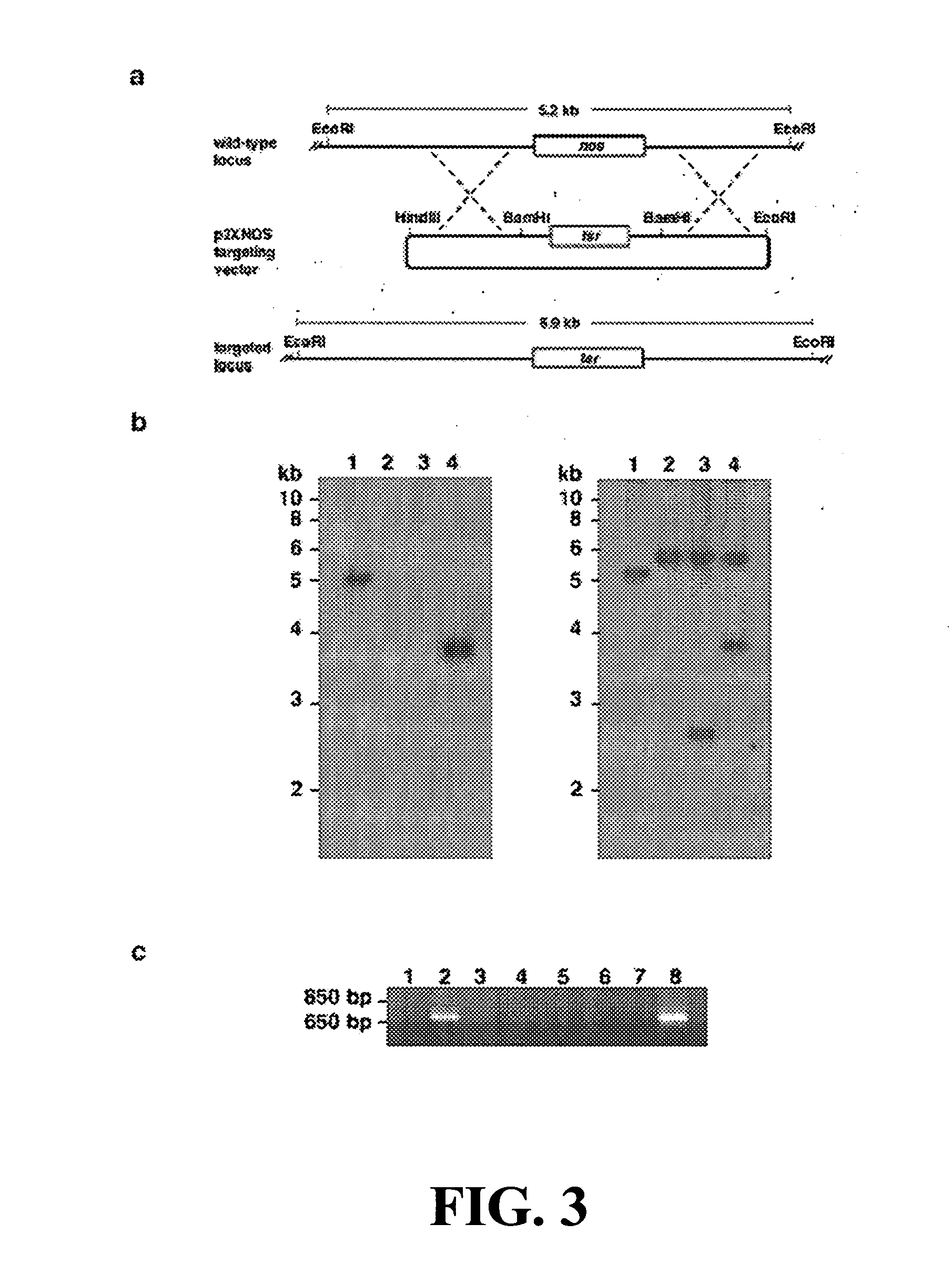Bacterial nitric oxide synthases and uses thereof
a technology of nitric oxide and nitration, which is applied in the field of isolated nucleic acid molecules encoding nitric oxide synthases, can solve the problems of low specificity, low yield, and conventional nitration reactions, and achieve the effect of fine-tuned selectivity and specificity of the broaden substra
- Summary
- Abstract
- Description
- Claims
- Application Information
AI Technical Summary
Benefits of technology
Problems solved by technology
Method used
Image
Examples
example 1
Thaxtoniin Production
[0073]Streptomyces turgidiscabies cultures were grown in oat bran broth or oat meal broth (Healy et al., Mol. Micro. 38:794-804 (2000); and Goyer et al., Phytopathology 88:442-445 (1998), which are hereby incorporated by reference in their entirety) inoculated with spores. After shaking at 150 rpm and 25° C. for 5-9 days the cultures were filtered and dry weight of the mycelia was measured. Thaxtomin was extracted from the filtrate with ethyl acetate, dried, redissolved in methanol, and quantified using HPLC (column: 5 μm C18; 250×4.6 mm; mobile phase: MeCN: H20:TFA (40:60:0.1)). In experiments investigating the suppression of thaxtomin production in the presence of L-NAME, this NOS inhibitor was dissolved in water, filter-sterilized, and added at the time of inoculation.
example 2
15N Feeding Studies
[0074] NMR analysis was conducted on thaxtomin A extracted from cultures fed either L-Arginine-guanidino-15N2.HCl (Cambridge Isotope Laboratories), or 15NH4NO3 (Aldrich). 15NH4NO3 was added to oat bran broth at the time of inoculation with spores of S. turgidiscabies, whereas L-Arg-guanidino-15N2.HCl was added just prior to the onset of thaxtomin biosynthesis (4-5 days after inoculation). Purified thaxtomin A dissolved in CD3OD was analyzed on a Varian VXR-400S spectrometer equipped with a Nalorac broad-band probe affording observation of 15N at 40.5 MHZ. Spectra were referenced externally by observing the 15N signal of formamide (90% solution in DMSO) and then acquiring sample spectra with identical parameter sets. A conventional chemical shift scale (liquid NH3=0 ppm) was established by referencing the formamide signal to its reported value of 112 ppm (Martin et al., J. Nat. Prod. 63:543-585 (2000), which is hereby incorporated by reference in its entirety).
example 3
[0075] DNA and RNA manipulation were performed using standard techniques. Transformation of S. turgidiscabies was performed using polyethylene glycol (PEG) mediated transformation of S. turgidiscabies protoplasts using plasmid vectors propagated in E. coli ET12567 (MacNeil et al., Gene 111:61-68 (1992), which is hereby incorporated by reference in its entirety). Streptomyces turgidiscabies p2XNOS single cross-over transformants (apramycin resistant, thiostrepton resistant) were grown for three generations of growth and sporulation on minimal medium containing thiostrepton, after which colonies containing double cross-over (apramycin sensitive, thiostrepton resistant) recombination events were screened. Expression of nos was induced in the complemented Δnos strain by addition of 10 μg ml−1 thiostrepton in a 5 mL oat bran culture 3 days following inoculation.
PUM
| Property | Measurement | Unit |
|---|---|---|
| temperature | aaaaa | aaaaa |
| temperature | aaaaa | aaaaa |
| chemical shift | aaaaa | aaaaa |
Abstract
Description
Claims
Application Information
 Login to View More
Login to View More - R&D
- Intellectual Property
- Life Sciences
- Materials
- Tech Scout
- Unparalleled Data Quality
- Higher Quality Content
- 60% Fewer Hallucinations
Browse by: Latest US Patents, China's latest patents, Technical Efficacy Thesaurus, Application Domain, Technology Topic, Popular Technical Reports.
© 2025 PatSnap. All rights reserved.Legal|Privacy policy|Modern Slavery Act Transparency Statement|Sitemap|About US| Contact US: help@patsnap.com



